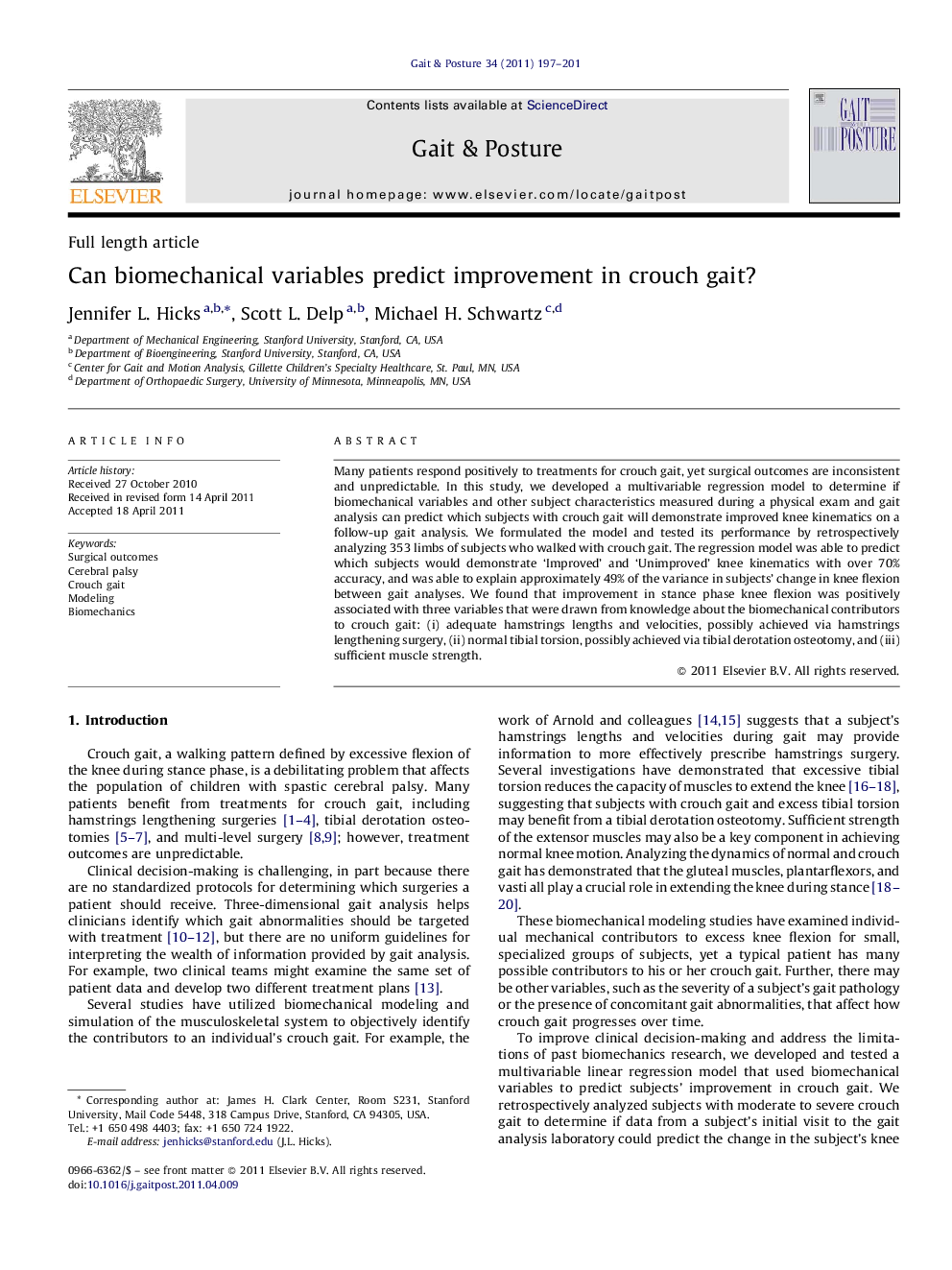| Article ID | Journal | Published Year | Pages | File Type |
|---|---|---|---|---|
| 4056892 | Gait & Posture | 2011 | 5 Pages |
Many patients respond positively to treatments for crouch gait, yet surgical outcomes are inconsistent and unpredictable. In this study, we developed a multivariable regression model to determine if biomechanical variables and other subject characteristics measured during a physical exam and gait analysis can predict which subjects with crouch gait will demonstrate improved knee kinematics on a follow-up gait analysis. We formulated the model and tested its performance by retrospectively analyzing 353 limbs of subjects who walked with crouch gait. The regression model was able to predict which subjects would demonstrate ‘Improved’ and ‘Unimproved’ knee kinematics with over 70% accuracy, and was able to explain approximately 49% of the variance in subjects’ change in knee flexion between gait analyses. We found that improvement in stance phase knee flexion was positively associated with three variables that were drawn from knowledge about the biomechanical contributors to crouch gait: (i) adequate hamstrings lengths and velocities, possibly achieved via hamstrings lengthening surgery, (ii) normal tibial torsion, possibly achieved via tibial derotation osteotomy, and (iii) sufficient muscle strength.
